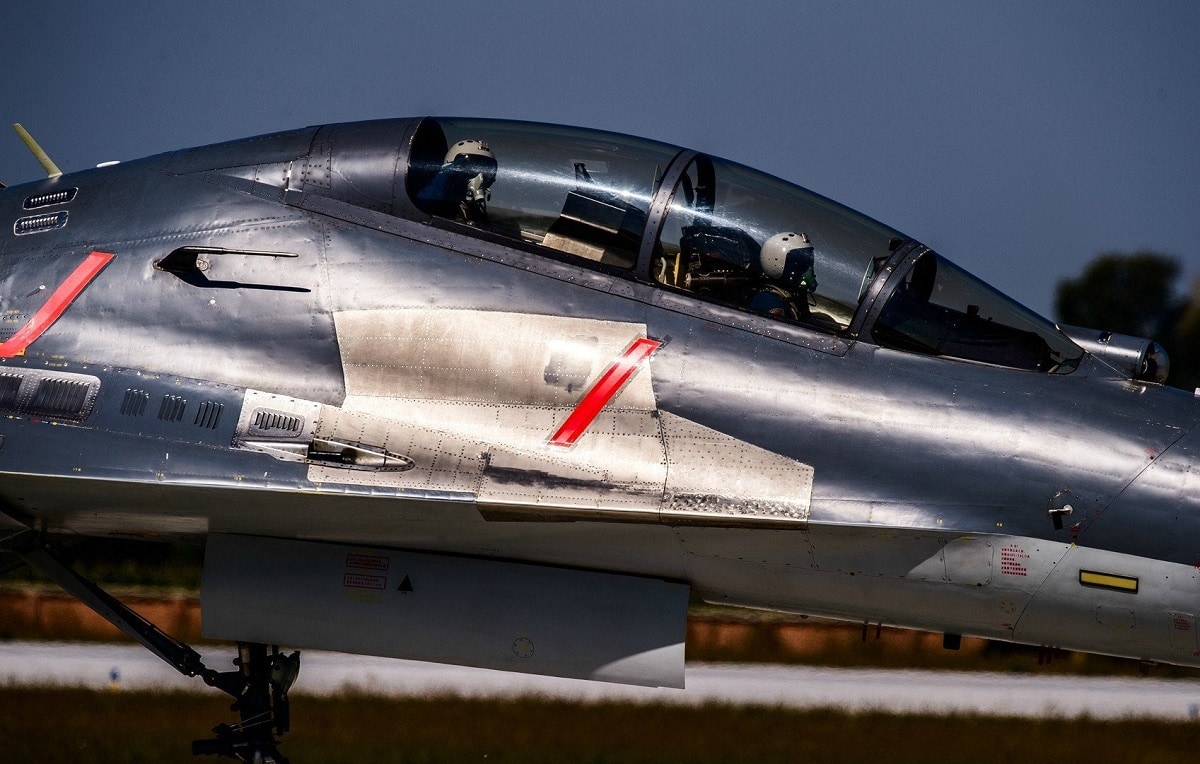China’s J-11 fighter: Just a copy of Russia’s Su-27 fighter? They did it again. China sent 14 airplanes in flight that encroached on Taiwan’s air defense identification zone when President Joe Biden was in Asia during his recent tour. Four of these were Shenyang J-11 fighters. Taiwan had to scramble its interceptors to address the incursion. Let’s take a look at the J-11 to see why China depends on it so much.
J-11 Has Ample Russian Inspiration
The People’s Liberation Army Air Force (PLAAF) has flown the J-11 since 1998. It was devised to compete with the F-16 Fighting Falcon and the F/A-18 Hornet. The J-11 design was based on the Russian Sukhoi Su-27. The PLAAF negotiated a license in 1995 to make 200 J-11s in China based on a kit from Russia. After that licensing agreement ended the PLAAF likely had the manufacturer (Shenyang Aircraft Corporation) reverse-engineer components of the plane without authorization. So, Shenyang kept making J-11s much to Russia’s annoyance because Moscow wanted the engines and avionics to still be made in Russia.
J-11B Variant Is Mostly Indigenously Built
The J-11 is flown by one pilot, and it has two engines. This is a non-stealthy fighter, but it has become a workhorse for the PLAAF as 253 of all variations have been built over the years. China made its own improvements to the J-11B variant, giving it a better cockpit with a heads-up display plus radar early warning that can detect enemy fighters at a range of over 90-miles and surface ships at over 200-miles. Ninety percent of the J-11B is made up of Chinese-built components.
Copy of the Su-27
The J-11 looks just like the Su-27. Militaryfactory.com explained that the “cockpit is situated well-forward in the well-countered nose behind a nosecone assembly housing the internal radar facilities.”
Well-armed with Chinese Produced Munitions
The J-11 also has a full complement of bombs and air-to-air missiles made in China that are infrared- or radar-guided, plus laser-guided bombs and free-fall cluster bombs. It can also carry air-to-ground missiles. There are ten hardpoints on the wings. The fighter can also drop chaff and flares to spoof enemy missiles.
Engines Are Problematic
The WS-10A Taihang turbofan engines have performed poorly for the J-11B, lacking adequate thrust as they also require substantial amounts of maintenance and overhauls. The top speed is 1,553 miles per hour and the range is 2,193 miles with a ceiling of 62,500 feet.
China Keeps Poking and Prodding Taiwan
It seems like every time the United States talks tough on Taiwan, China sends a flight of military aircraft including the J-11. You can read about these common incursions here and here. The J-11 escorts strategic nuclear-capable bombers such as the H-6 during these missions.
No Let Up Between China and Taiwan
These flights from China and their response from Taiwan’s interceptors can create an environment in which accidents and miscalculations could occur. However, despite this danger, China appears to have no intention of reducing the number of flights to Taiwan’s Air Defense Identification Zone.
Thankfully, no shots have been fired yet. The process will simply keep repeating itself since China believes that Taiwan is a renegade province that should be brought into the control of the mainland. Any time the United States discusses independence for Taiwan or conducts military sales, China will likely respond with a show of force with J-11 fighters.
Now serving as 1945’s Defense and National Security Editor, Brent M. Eastwood, PhD, is the author of Humans, Machines, and Data: Future Trends in Warfare. He is an Emerging Threats expert and former U.S. Army Infantry officer. You can follow him on Twitter @BMEastwood.

